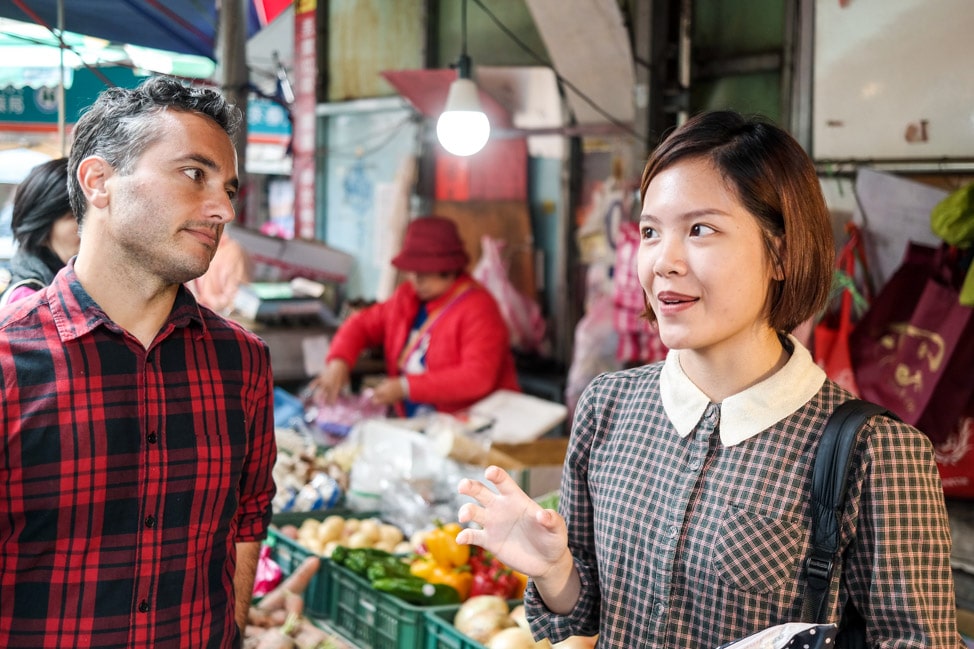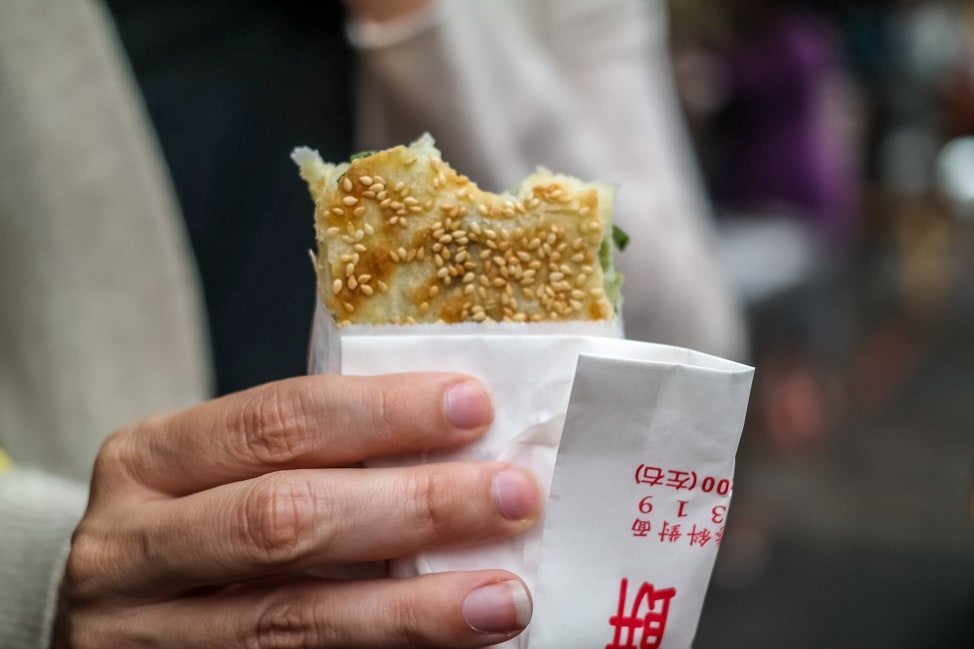Well, if you are us, you go on a food tour, the world’s solution for mildly food-obsessed over eaters.
We are huge proponents of food tours, which provide a fantastic overview of a city’s food culture. We’ve eaten snake at one of Shanghai’s night markets, sampled freshly made dumplings in Hong Kong, snacked on tempura veggies on the streets of Tokyo, and eaten Roman-style pizza with the Campo de Fiori as our backdrop. Over the course of 3-4 hours, food tours give access to a wide range of classic dishes, often at places off the normal tourist trail. It is like a whole weekend of eating adventures packed into one afternoon.
With a short visit to Taipei booked, we immediately set about finalizing a Taipei food tour with Taipei Eats, one of the leading food tours in the city.
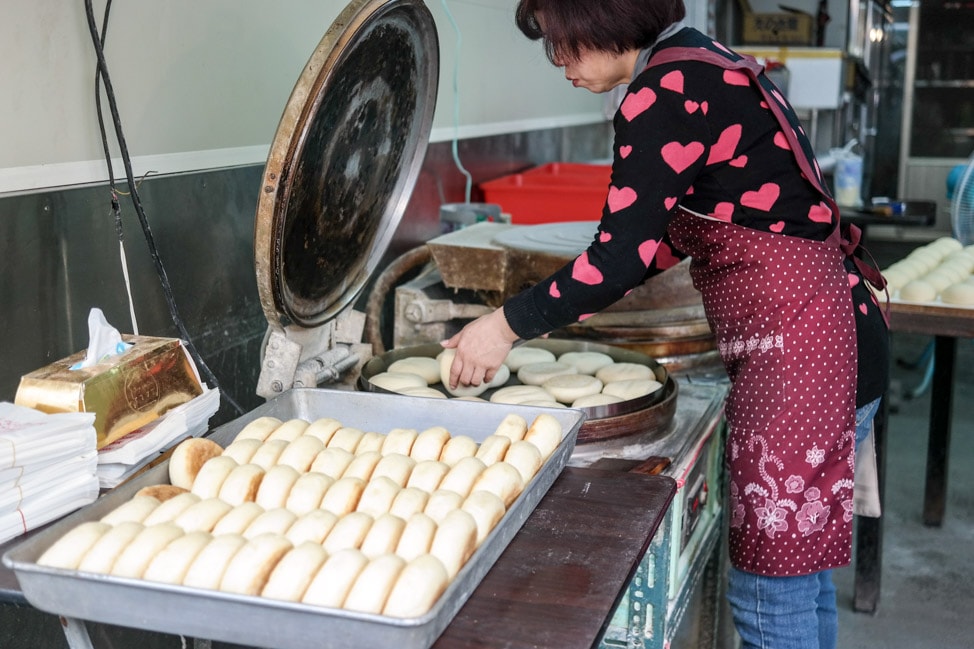
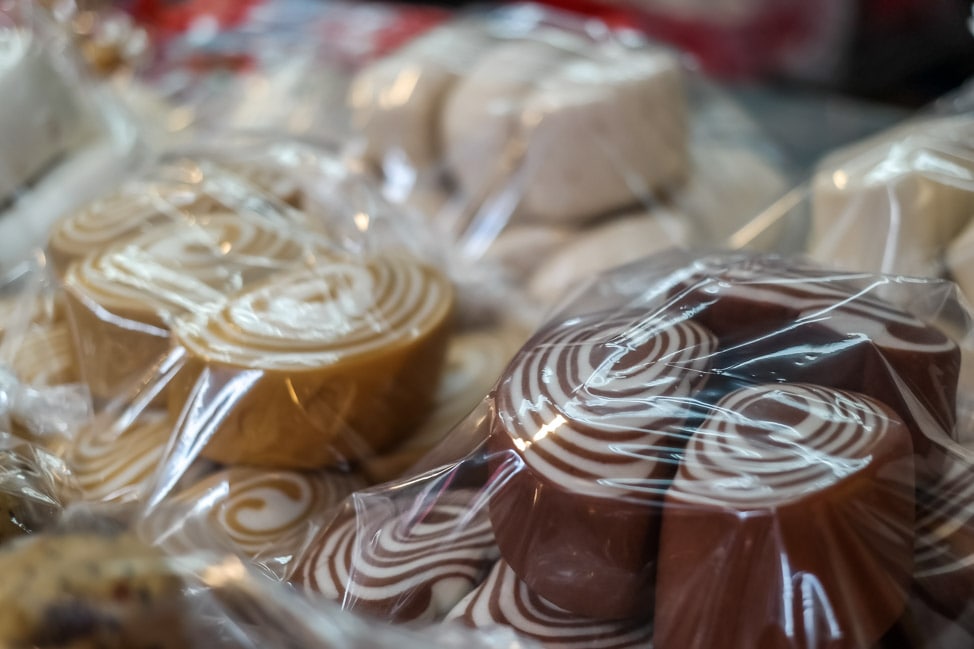
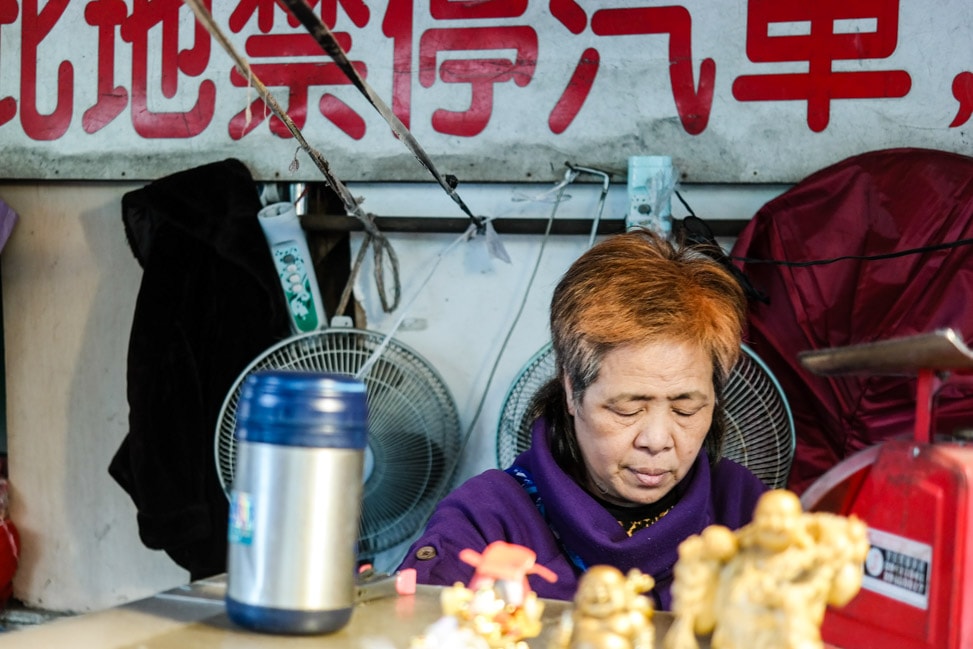
Taipei Food Tour with Taipei Eats
Our Xinyi Backstreet Tour began at 11am, when we met our guide Amber and three other people along for the eating adventure. Our first stop was Hulin Market, an active wet market just around the corner from the MTR station. Within minutes of setting off, we were walking along a crowded, narrow street, digging into wax apples and the sweetest pineapple we’ve ever tasted.
We learned that Taiwan has a diverse range of climates, from cooler mountain regions to hot and humid coastal areas, which allows a huge variety of fruit to be grown domestically. That means the stalls at this wet market are stacked with the best of Taiwanese fruit, including things we had never seen before.
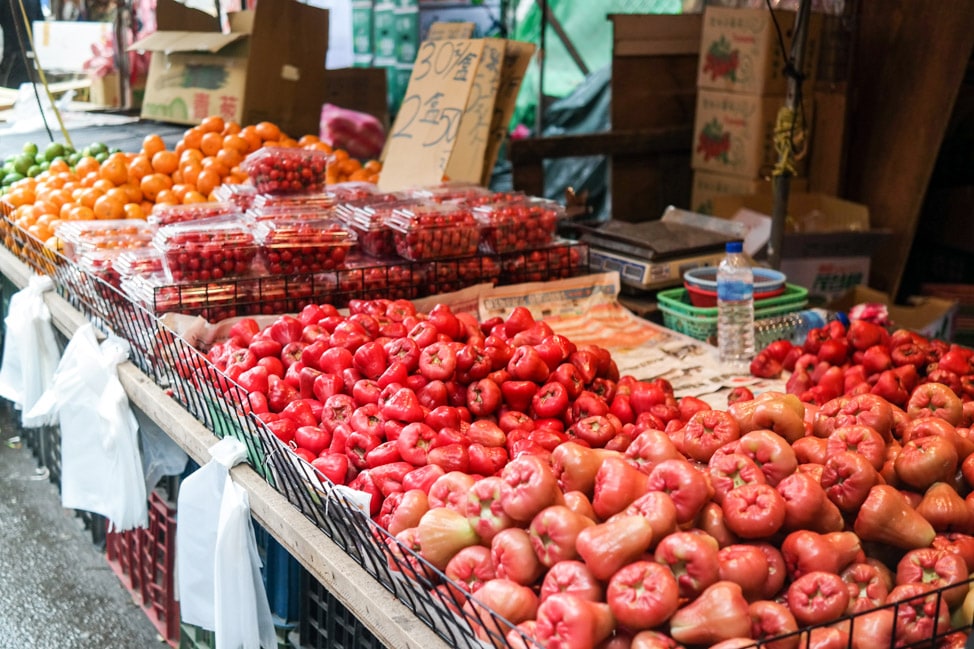
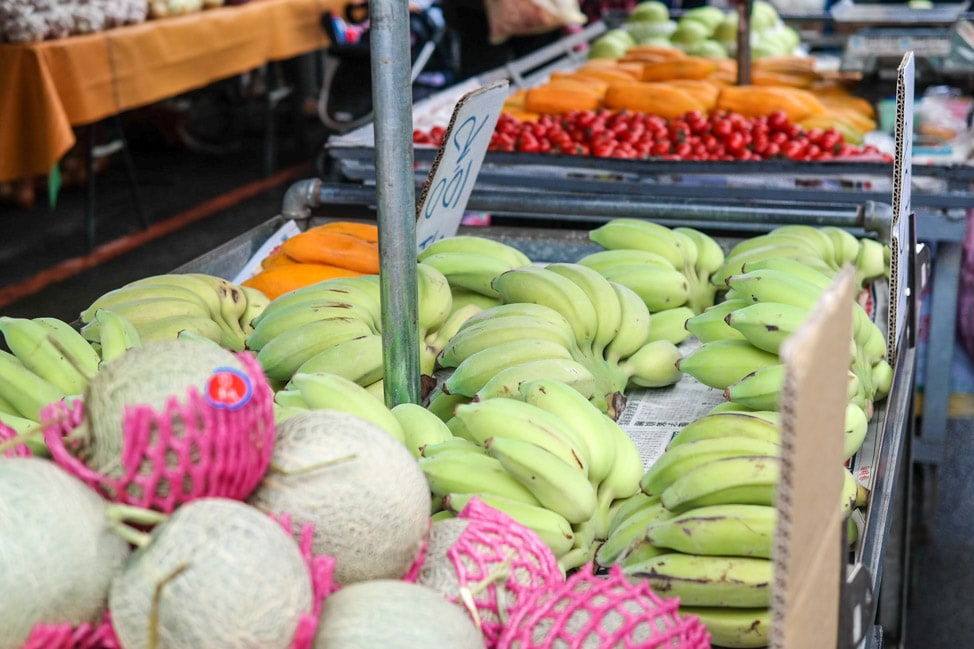
Also, forget the build-up of flavors along the way, our favorite bite of the entire food tour happened early, within the wet market.
The stall that stole our hearts? Scallion pancakes. We got to watch as the son of the owner stretched, folded, and filled the dough with a copious amount of scallions before cooking them in a massive press, with a generous topping of sesame seeds. The piping hot bread was simply delicious, and you could see the many layers of dough from the repeated folding and kneading. And it wasn’t greasy at all, just purely delicious.
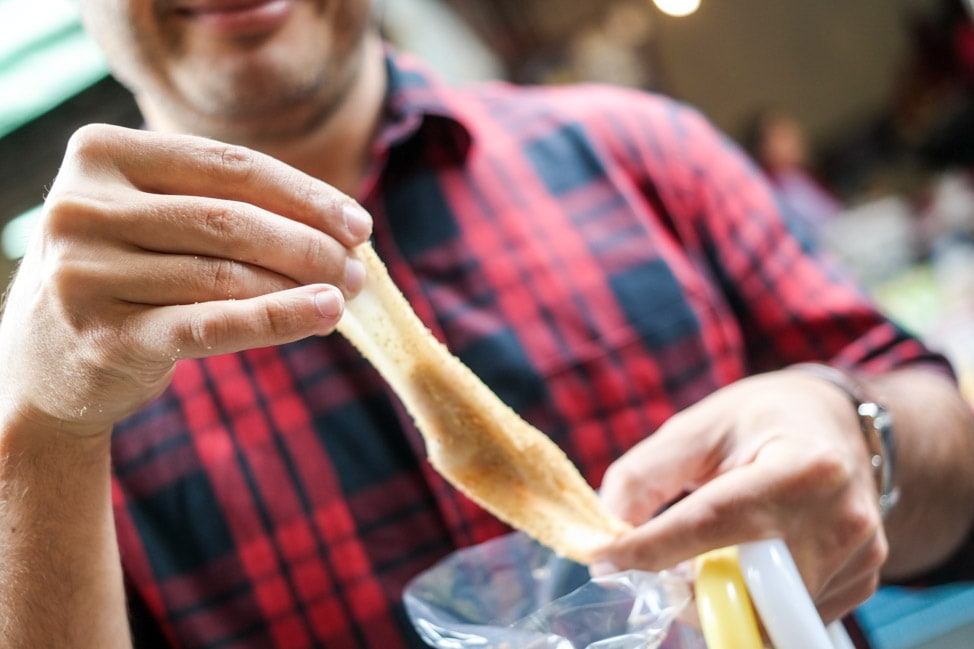
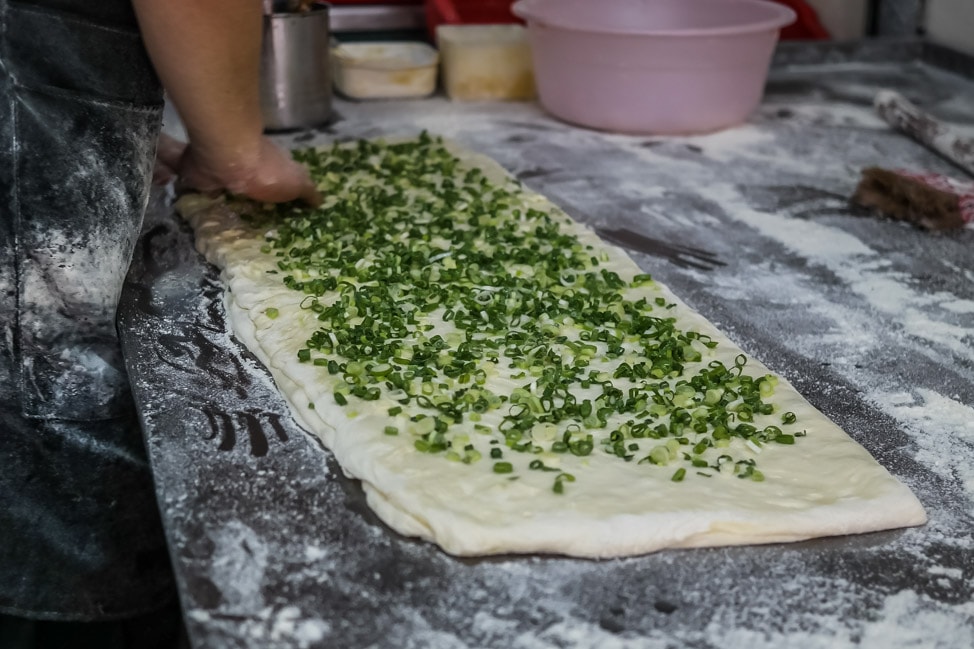
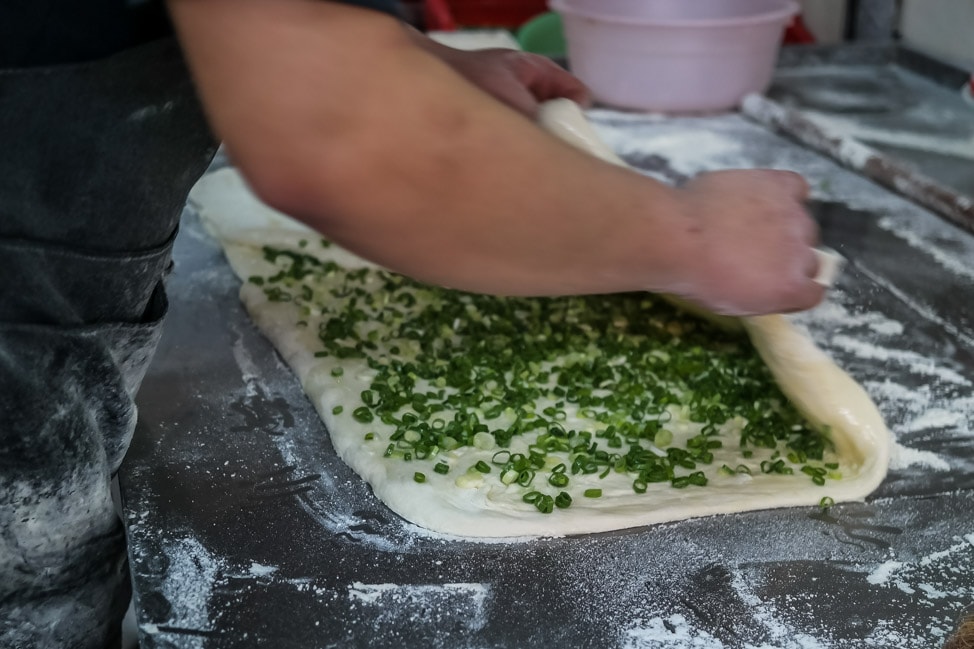
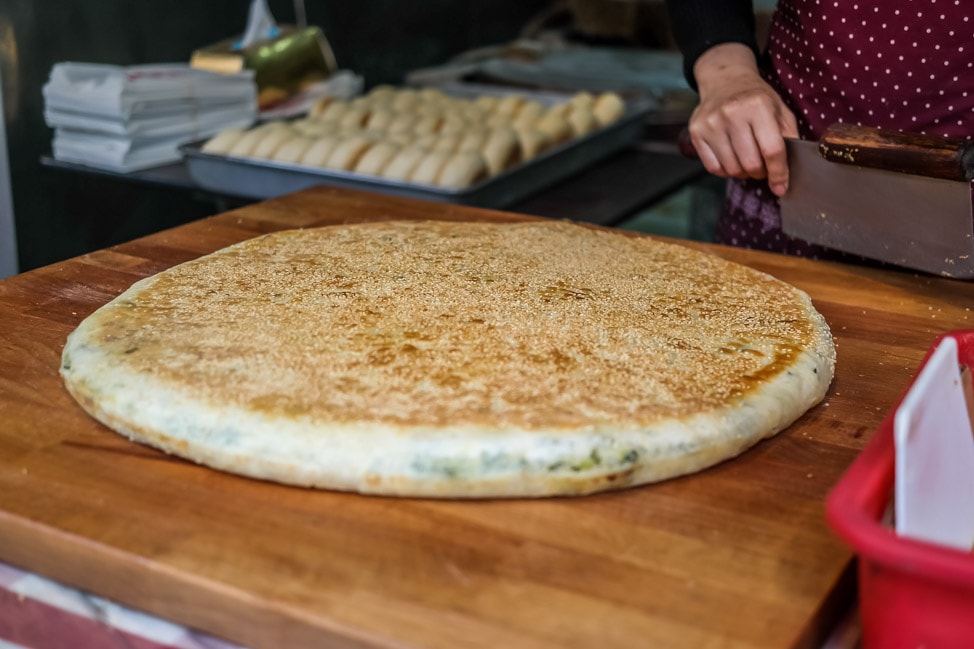
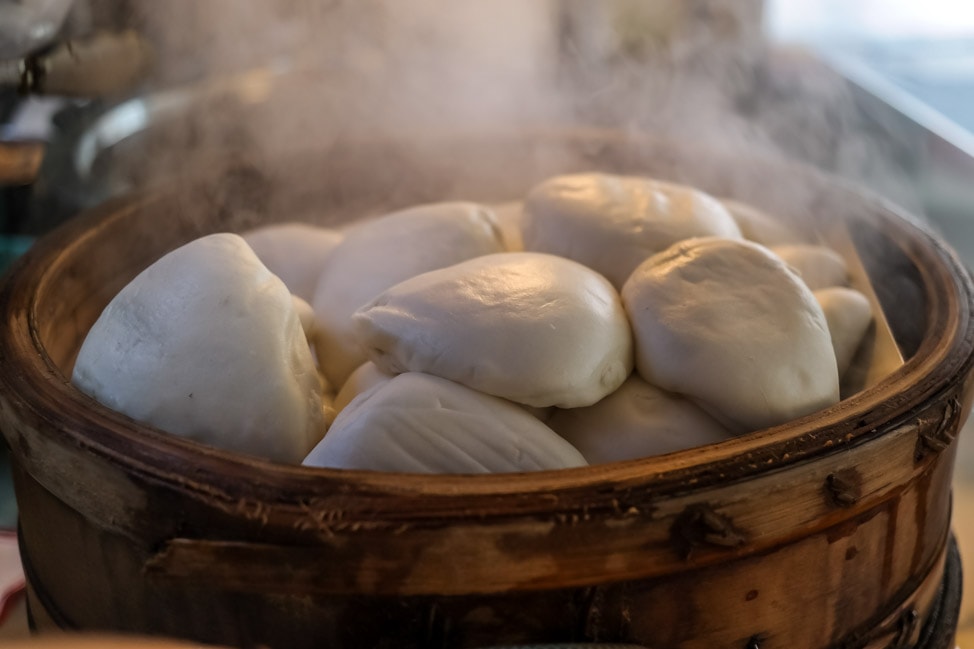
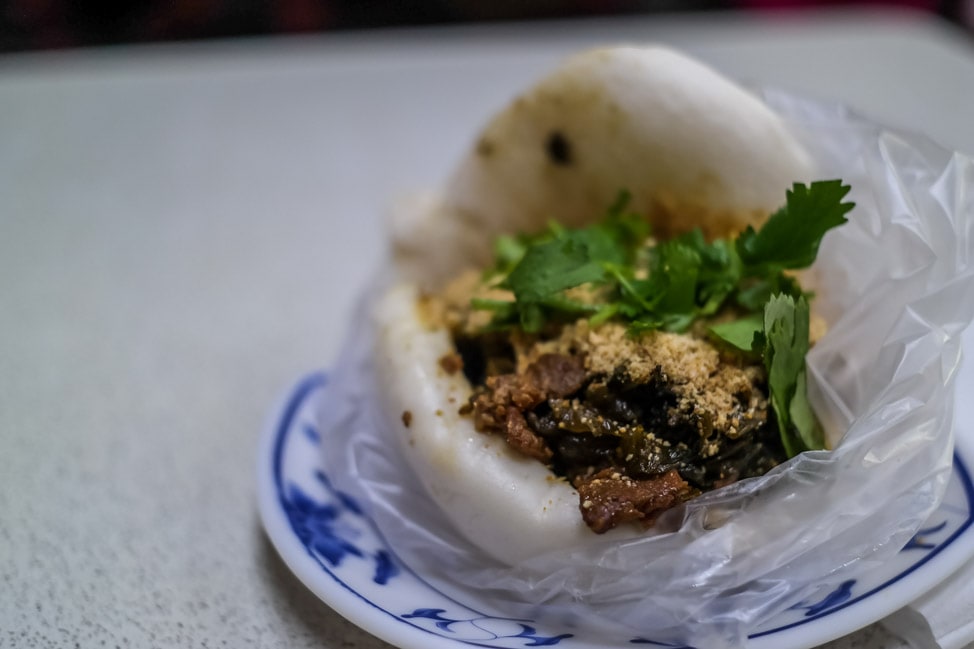
Our next two stops were the adventurous ones, food experiences that are almost notorious around Taipei.
The first was to try betel nut. Betel nuts are incredibly popular all around SE Asia, and Taiwan is no exception. The small nut is wrapped in a leaf and you chew on it, spitting out any liquid. It is similar to chewing tobacco and affords the same buzz as tobacco or caffeine. It famously turns your saliva bright red. Julie and I both tried it, and found the taste to be a bit bitter, though not off-putting. We only chewed on it for a few minutes – Amber said some people chew on it for hours – before decided we were happy to check off that experience from the ‘ole lifetime bucket list.
Betel nut adventure over, it was time to move onto the real challenge: stinky tofu. In case you are unaware of this delicacy, which is beloved in Taiwan, it is tofu that is submerged in fermented vegetable matter for a very, very long period of time. You can find it at night markets and restaurants, and can eat it cold, fried, or cooked in soup. The degree of “funkiness” increases with how long the tofu is allowed to ferment. The smell hits you like a wall of stink, comparable to rotting food (which it is) or garbage, or open sewer. Really, the stench can almost not be overstated. Our tour brought us to the king among kings of stinky tofu, Dai’s House of Stinky Tofu.
This is a place where even the famous Andrew Zimmern from Bizarre Foods couldn’t get one bite down before spitting it out. If the stinky tofu here beat him, what chance did we have?
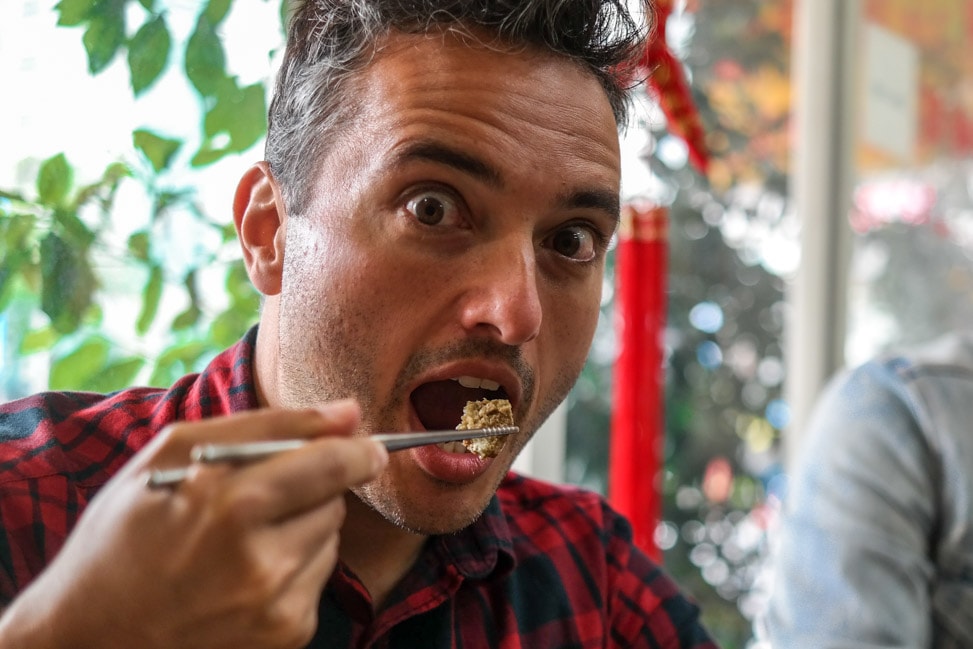
The fried variety, deemed less stinky by Amber, still packed the funk. Most of the group didn’t go in for more than a few bites (we managed one bite each of each variety). Amber, like the locals do, was happy to have a little more of our leftovers. And the worst part? The taste of the stinky tofu lingered in our mouths well after we left, like a bad hangover that won’t go away.
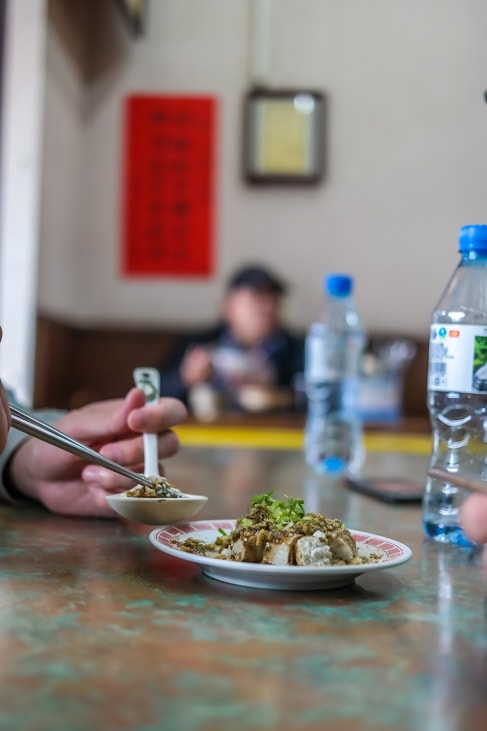
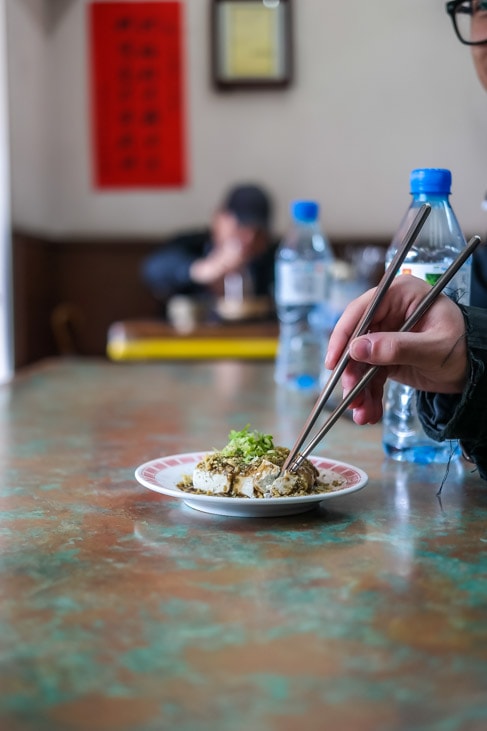
We strolled along the streets catching glimpses of the omnipresent Taipei 101 Tower, before settling down at Kao Chi, a famous restaurant group in Taiwan that helped popularize Shanghai soup dumplings in Taipei. In fact, Kao Chi was founded in 1949, a full eight years before the more famous chain, Din Tai Fung, opened its first location in Taipei. We quickly downed orders of the standard pork xiaolongbao and the pan-fried version of soup dumplings, shengjianbao. (For a primer on dumplings, here’s our take on the region’s best.)
We were starting to feel full at this point, but Amber insisted that we try the famous pineapple cake from Wu Pao Chun Bakery, a legendary Taipei bakery. The small cakes were filled with a not overly sweet pineapple mixture, encased in a crumbly, incredibly buttery pastry.
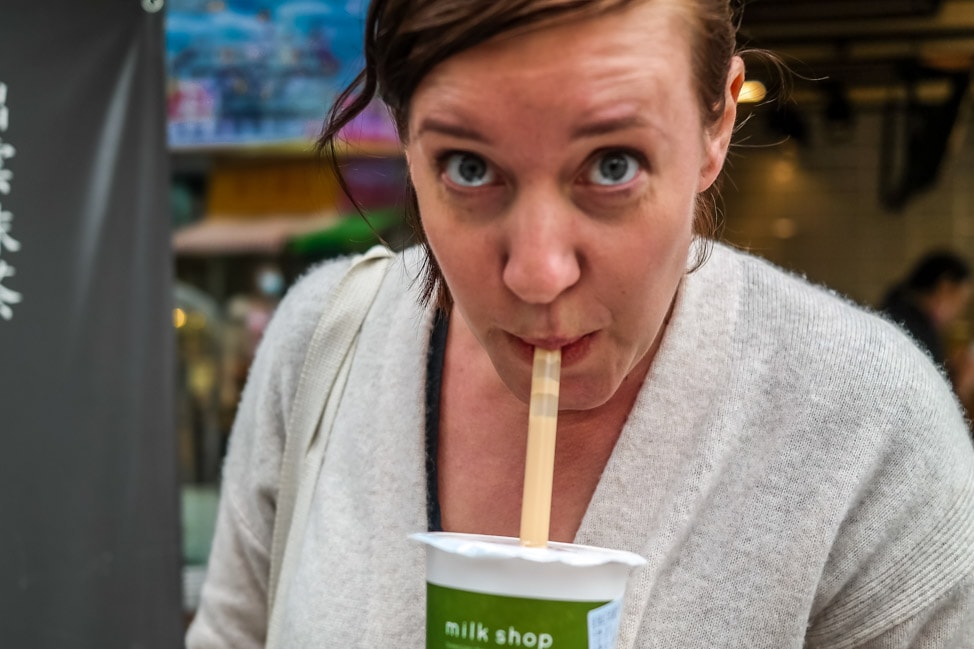
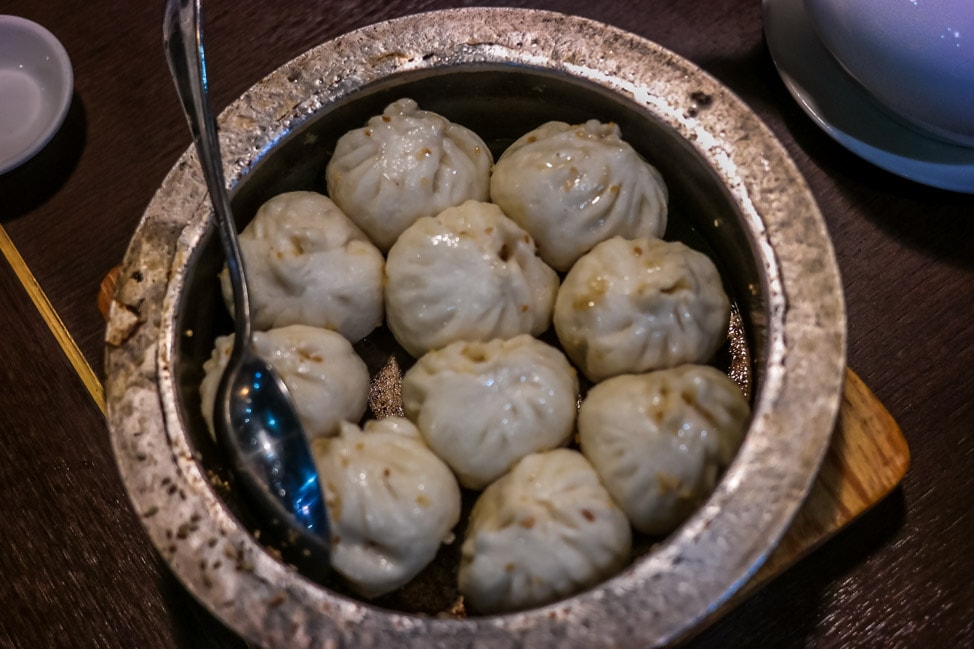
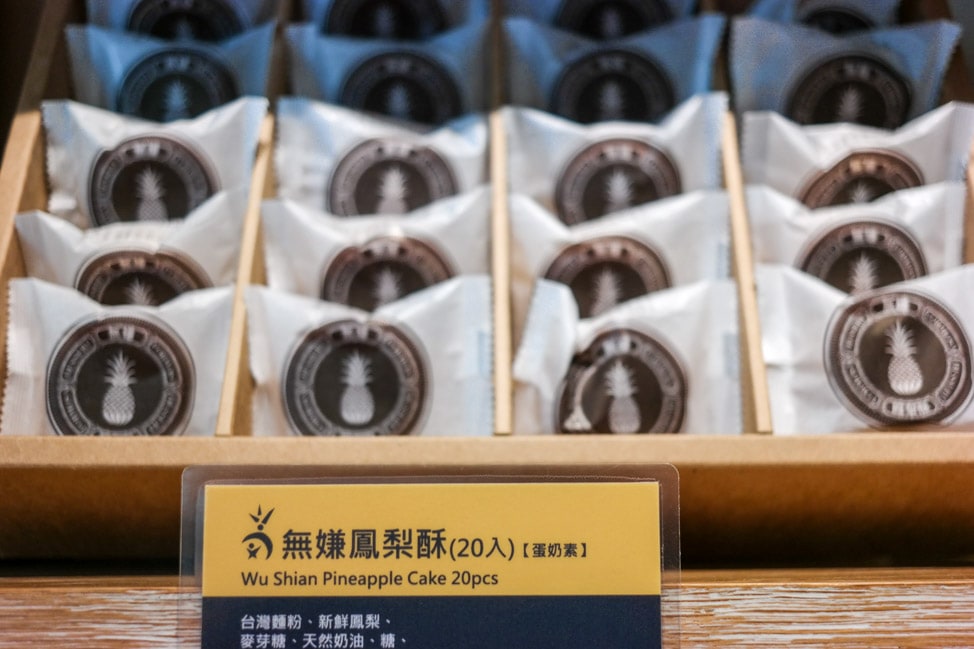
If I am not selling you on oyster omelettes, that is okay. We didn’t love them either. I’m still trying to figure out who first put tapioca starch in eggs, and why anyone continued to do it.
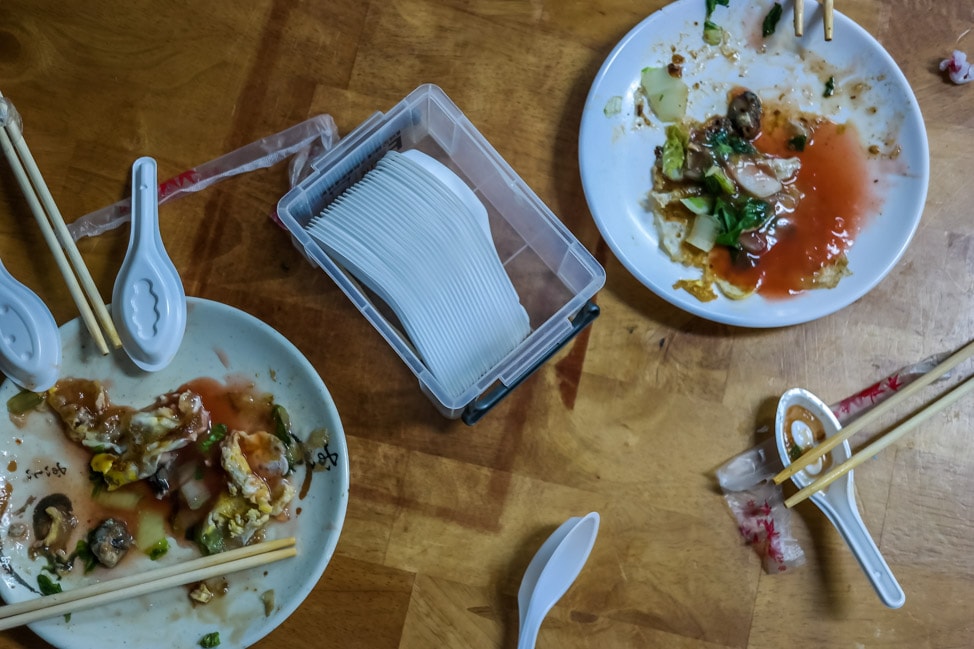
Amber was a great guide, setting a pace for the walk that offered just the right foods at just the right time (milk tea right after stinky tofu, for example!). She provided insight into Taiwanese food culture, and life in Taipei. After our walk, our Taiwan food checklist complete, we happily had an afternoon nap and plotted our return to our favorite food walk stops.
